I am optimistic that everyone can acquire an attractive and healthy body composition, including women of a certain age. I’ll discuss what I think is the best strategy for that in future blog posts. First, some ground work.
Obesity and weight regulation is a complicated subject, and I have to confess upfront that I am not thoroughly conversant with the literature. I still learn new things every time I delve into the journals. Occasionally, I will I write posts (like today’s) that look into journal articles and molecular pathways related to obesity. This helps me explore ideas and learn. Hopefully you’ll have some fun following along.
A good starting point for an investigation into obesity would seem to be the issue of how weight regulation works in a healthy person. How does our body keep itself at its ideal weight?
Now all the problems our body has to solve, had to be solved about 2 billion years earlier by the first eukaryotic cells. Formed by the merger of fat-eating mitochondria with glucose-eating bacteria, single-celled eukaryotes had to regulate their various metabolic pathways to keep themselves from becoming too fatty or too lean (and to control the urge of mitochondria to eat their hosts!). Then, when multi-cellular organisms developed, these cellular-level mechanisms were the building blocks available for organism-level weight regulation.
So we can simplify the subject a bit by looking at individual cells. And here CarbSane gets a huge “hat tip” for finding a fascinating paper that neatly summarizes how an individual human muscle cell controls its fat and glucose levels.
Obese Cells on High-Carb Diets
The paper dates from 2004, looks at muscle cells, and has the latinate title of “Substrate cycling between de novo lipogenesis and lipid oxidation: a thermogenic mechanism against skeletal muscle lipotoxicity and glucolipotoxicity.” [1]
We can (loosely) translate “de novo lipogenesis” as “fat creation from glucose,” “lipotoxicity” as “too much fat” and “glucolipotoxicity” as “too much glucose in a cell that has too much fat.” So the paper is examining cells that are:
- fat;
- eating a high-carb diet; and
- disposing of excess glucose by converting it to fat.
Sounds familiar! How do these cells control their weight?
Cells Follow the Same Strategy as the Body
Glucose can be toxic and it feeds bacteria, so excess glucose is removed from the body as quickly as possible. First, it’s stored as liver and muscle glycogen; beyond that it is mostly converted to fat by de novo lipogenesis.
The main organs which do that conversion are the liver and adipose tissue, but this paper points out that muscle cells do it too:
The recent recognition that de novo lipogenesis might have relevance for lipid homeostasis in skeletal muscle stems from the realization that Sterol regulatory element binding protein-1c (SREBP-1c), a member of the family of transcription factors that regulate the expression of genes involved in lipid storage in liver and adipose tissue, is also present in skeletal muscle at a level close to that observed in the liver,41,42 … [M]ost fascinating are the very recent demonstrations that glucose alone (in the absence of insulin) can stimulate de novo lipogenesis in skeletal muscle cells….
[I]t is clear that de novo lipogenesis, although low in skeletal muscle, can be markedly stimulated in muscle cells, particularly under conditions of high glucose (and/or high insulin) concentrations. [1]
So muscle cells convert glucose to fat just as liver cells do. Indeed, they convert glucose to fat even without any insulin stimulation, just to get rid of it – but they dispose of glucose most aggressively when stimulated by insulin.
The likely reason for this is to help the body avoid glucose toxicity:
Extrapolated to conditions of postprandial elevation in blood glucose and insulin (particularly after a high-carbohydrate meal), de novo lipogenesis in skeletal muscle, like in the liver, could also contribute to blood glucose homeostasis by disposing some of the excess circulating glucose as muscle triglycerides, particularly if the glycogen stores are full. In other words, de novo lipogenesis in myocytes may provide another sink for glucose disposal through skeletal muscles. [1]
Insulin gets the muscle cells to take in more glucose and do more of this glucose-to-fat conversion. So insulin is a glucose disposal hormone. Muscle cells respond to it as an act of charity to the rest of the body.
But if muscle cells are storing fat that they manufacture from glucose, they risk becoming obese. How do they get rid of excess fat?
That gets us to the other latinate phrase in the title, “lipid oxidation,” also known as fat burning, and a key hormone, leptin. The authors write:
It is now well established that the adipocyte-derived hormone leptin, which is well known for its central role in body weight regulation in part via its control over thermogenesis, 52–55 also plays an important role in blood glucose homeostasis and in the protection of insulin-sensitive tissues against excessive ectopic lipid storage by regulating the partitioning of fatty acid away from storage towards oxidation. 56–58 [1]
Leptin is released by adipose cells in proportion to the amount of fat they are storing. High leptin levels mean “I’m obese, help me lose weight”; low leptin levels mean “I’m skinny, please don’t waste any fat, we may need it.”
Leptin helps the body regulate its weight, by two mechanisms:
- Leptin promotes fatty acid oxidation, or the burning of fats.
- Leptin triggers thermogenesis, “creation of heat,” which warms the body and causes it to lose energy.
In short, leptin causes the body – and individual muscle cells – to transform fat into waste heat, thereby slimming down the cells and the body.
What happens if you stimulate normal muscle cells with both leptin and insulin? This situation occurs in a healthy person with too much fat (leading to high leptin) who has eaten a high-carb meal and has lots of extra blood glucose to get rid of (leading to high insulin). The insulin triggers the glucose-to-fat conversion pathway, the leptin triggers thermogenesis – but the effect is compounded because the insulin amplifies leptin activity:
[W]e found that leptin could directly stimulate thermogenesis in skeletal muscle via ObRb,62 and that this thermogenic effect of leptin, which requires PI3K activity (since it is inhibited by wortmannin), is potentiated by insulin, a potent activator of PI3K. [1]
This makes sense: the body really wants to get rid of the excess glucose, which is toxic, but high leptin means it’s already fat and doesn’t want to get fattier. So if you’ve got too much fat and too much glucose, you really, really want to turn up the waste heat generator.
So eating some carbs, by increasing after-meal insulin, will actually tend to increase fat oxidation and waste heat generation. That is, it will lead to more calories out, at least for a few hours after a meal. Whereas a zero-carb diet, by keeping insulin low after meals, might tend to tamp down postprandial waste heat generation.
If you read CarbSane’s post, you’ll see that this is what got her excited. (Maybe it would also excite Matt Stone, advocate of the carb-overfeeding-raises-body-temperature thesis.)
We shouldn’t jump to the conclusion that eating lots of carbs is good for weight loss, since carbs may also increase appetite and calories in, or have other effects such as generating a transient glucotoxicity. But we should keep this thought in the backs of our minds: Not every response to dietary carbs works against weight loss.
The paper notes that it’s not only leptin that stimulates thermogenesis. Other hormones – including adiponectin, which is also released by adipose cells, stimulate the same thermogenic pathways.
One can also entertain the interesting possibility that, in skeletal muscle, this substrate cycling is also activated in response to other hormones and neurotransmitters (eg, adiponectin, catecholamines) particularly since adiponectin, as well as adrenergic agonists, can also stimulate AMPK activity, glucose utilization and fatty acid oxidation in skeletal muscle or adipose tissue.61,66–69 This substrate cycling between de novo lipogenesis and lipid oxidation could therefore constitute a thermogenic effector in skeletal muscle. [1]
Adiponectin is a favorite hormone of Dr. Kenneth Tourgeman of the blog Nephropal. High adiponectin levels are associated with good health; obesity is associated with low levels of adiponectin. Adiponectin, among other effects, increases insulin sensitivity – thus it would tend to promote thermogenesis not only by its own action, but also indirectly by enhancing insulin amplification of leptin-induced thermogenesis.
What If The Cell Became Hormone Resistant?
As a thought experiment, we can imagine what would happen if our healthy muscle cell became metabolically damaged – if it became resistant to some of these hormones.
If it became leptin resistant, then it would no longer dispose of excess fat via thermogenesis. The fat would collect and the cell would become obese.
If the cell remained leptin resistant but insulin sensitive, it would gradually kill itself through obesity. So leptin resistance would naturally lead to insulin resistance as the cell protects itself against lipotoxicity.
Once the cell becomes insulin resistant, then it no longer disposes of excess glucose by fat conversion. Glucose levels might become elevated. This corresponds to the condition in the body as a whole that we call metabolic syndrome or prediabetes.
High glucose levels, of course, lead to glucotoxicity or poisoning by excess glucose. The pancreatic beta cells, which produce insulin, are especially subject to glucose poisoning. Thus, prediabetes in the body, continued long enough, leads to loss of these cells and diabetes.
We can imagine two kinds of diabetes:
- If the insulin resistance developed as a consequence of leptin resistance, then we’d have an obese diabetic.
- If the insulin resistance developed without leptin resistance, then we’d have a skinny diabetic.
Conclusion
I like this paper a lot because it gives us a look at the key hormonal pathways involved in obesity, but in a very simple model – a single muscle cell.
It suggests that possible causes of obesity are leptin resistance and adiponectin deficiency, and that if we want to fix obesity, we may wish to look for a diet which increases leptin sensivity and/or adiponectin level.
References
[1] Dulloo AG et al. Substrate cycling between de novo lipogenesis and lipid oxidation: a thermogenic mechanism against skeletal muscle lipotoxicity and glucolipotoxicity. Int J Obes Relat Metab Disord. 2004 Dec;28 Suppl 4:S29-37. http://pmid.us/15592483.







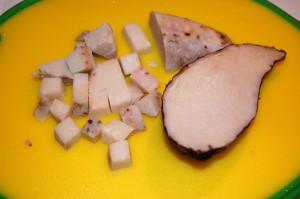
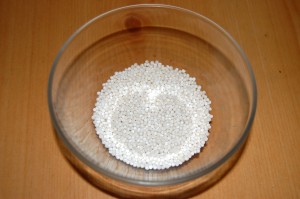
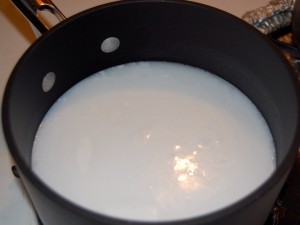
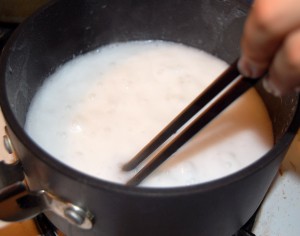
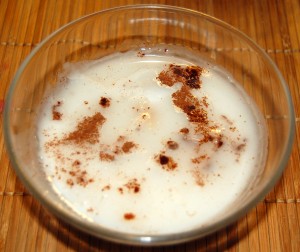

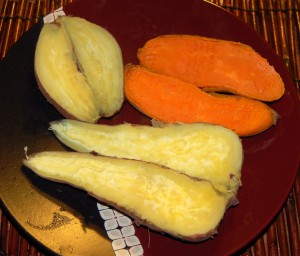





Recent Comments